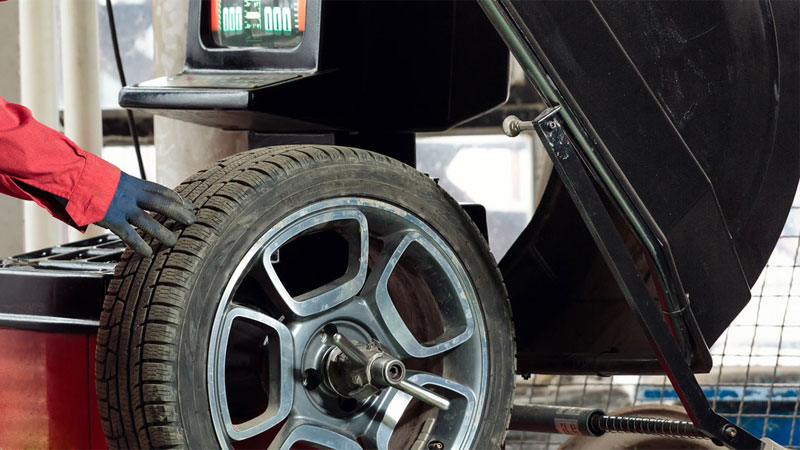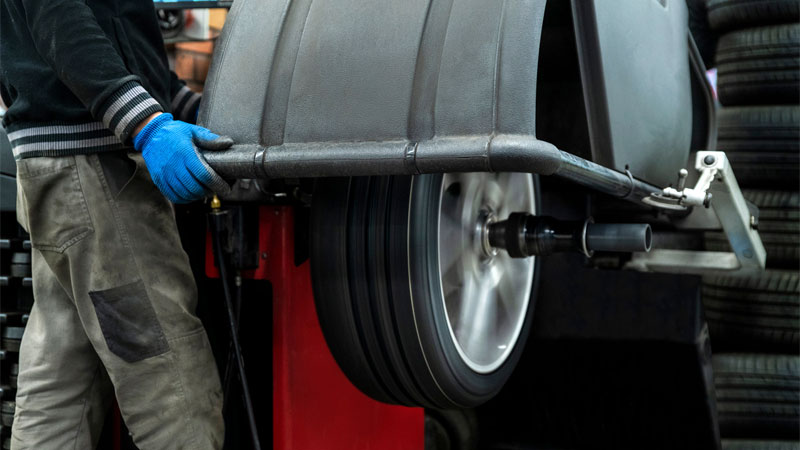The purchase of tires for any vehicle comes as a significant investment, requiring consumers to part with a fair sum of cash in any event. In order to make the most of such an investment, one must go to every length possible to maintain the condition of their vehicle’s tires. This involves having a vehicle’s tires serviced at all intervals specified per manufacturer.
Of such services, few are as important as having a vehicle’s tires balanced. Services of this type not only extend a tire’s effective life but mitigate aggravating ride-comfort issues.
Nonetheless, many motorists still find themselves questioning the overall importance of having their vehicle’s tires balanced, as well as the cost associated with services of this type.
The following guide has been assembled to eliminate much of the uncertainty that surrounds tire balancing as a whole, thereby allowing motorists to make the most informed decision possible. Consequently, this should eliminate many of the most common issues that arise from tire neglect.
Read on to learn more about the importance of having your vehicle’s tires balanced, as well as the cost associated with services of the like.
Read Also – How Much Does a Wheel Alignment Cost?
What Is Tire Balancing?
Tire or wheel balancing is a procedure that is conducted to offset disproportionately heavy spots within a vehicle’s wheel/tire combo. When balanced, a wheel is weighted to counteract natural inconsistencies within a tire, and the wheel itself. This weight is strategically placed, thereby creating a “balance”, under which no portion of a tire/wheel combo is any heavier than any other.
Tire balancing is generally conducted on a piece of specialty equipment known as a balancing machine. This machine spins a tire/wheel combo at a high rate of speed, all the while measuring irregularities in weight and form.
The computer contained within this unit then uses a series of mathematical equations to determine the exact point at which additional weight should be placed.
Weight is applied to a wheel in one of two ways. The first, and most common means of weighting a tire during the balancing procedure, is through the use of standard hammer-on wheel weights.
Alternatively, stick weights can be used in a similar manner, though these weights adhere to the inner diameter of the wheel itself, using adhesion as a means of retention.
See Also – What Do Tire Rating Letters Mean?
Static vs Dynamic Balancing
There are two major types of tire balancing procedures, one of which is static in nature, while the other is dynamic.
- Static balancing refers to balancing which occurs on a single plane of reference, or centrally through the middle axis of the hub itself.
- Meanwhile, dynamic balancing relates to three individual planes, thereby compensating for runout from any angle.
Currently, dynamic balancing is the only truly acceptable way of balancing a tire to any degree of accuracy. The idea of static balancing is now viewed as antiquated in nature and falls short of the industry standard.
When Should Tire Balancing Be Done?
There are several different instances in which a vehicle’s tires should be balanced. Recognizing these instances and acting accordingly can prove beneficial when attempting to extend the life of your vehicle’s tires, and obtain the best ride possible.
The following are several of the most common conditions under which a vehicle’s tires should be balanced.
1. New Tire Installation
No matter where you buy new tires, once mounted on the wheel, any new tire should be balanced, prior to final installation on the vehicle for which it is intended.
This ensures the optimization of ride comfort, thereby allowing a consumer to get the most out of their tires, in terms of overall quality and longevity.
2. Periodic Maintenance
Even in absence of ride-related issues, a vehicle’s tires should still be balanced on a regular and recurring basis to maximize their lifespan. The exact frequency of this service is dictated by the recommendations of a vehicle’s manufacturer, as well as those specified by the maker of your vehicle’s tires.
3. Lack Of Ride Comfort
Consumers might also choose to have their vehicle’s tires balanced in the event that they notice a vibration of sorts while at cruising speeds. Such vibrations often result from relative tire imbalance and can be quickly rectified with a quick trip to your shop of choice.
Tire Balancing Cost Comparison
| Service Center | Cost Per Tire |
|---|---|
| Walmart | $15 |
| Costco | $18 - $21 |
| Discount Tire | $16 (or free if tires purchased there) |
| Les Schwab | $12 - $16 (or free if tires purchased there) |
| Sam's Club | $20 |
| Firestone | $16 |
| Pep Boys | $16+ |
| Goodyear | $19 |
| Midas | $18 (or free if tires purchased there) |
| Dealership | $20 - $25 |
| Independent Shop | $15+ |
How Long Does Tire Balancing Take?
Generally speaking, it typically takes no more than 1 hour to have a vehicle’s tires balanced. However, the exact time required to accomplish this procedure often differs based on the exact size and style of tire that is to be serviced.
While small tires utilizing hammer-on weights take very little time to balance, heavier tires requiring the use of sticky weights can take inherently longer to balance.
One must also factor in the weight time associated with a particular shop, at the time that their vehicle is taken for service. While you might get lucky enough to catch a shop when they are slack, many shops are busy enough that service can be delayed by 1-2 hours, while waiting for a bay and technician to come available.
See Also – How Long Does It Take to Change Tires?
Can Tire Balancing Be Done At Home?
In certain instances, one can balance their vehicle’s tires at home without the use of a tire balancing machine. This is most commonly accomplished through the use of a bubble balancer (like this) or similar device, which can often be purchased at discount tool stores, such as Harbor Freight or online retailers such as Amazon.com.
However, it is worth mentioning that this form of balancing is strictly static in nature, rather than dynamic.
For some, the simplicity of taking their vehicle to have its tires balanced outweighs the potential financial advantages of conducting such services themselves. Especially considering the number of shops now offering lifetime rotation and balance services for a reasonable fee,
When Can Happen If You Don’t Balance Tires?
Having a vehicle’s tires balanced is important for a number of reasons, including those which pertain to untimely tire wear.
Tires that are not properly balanced tend to vibrate substantially, thereby skipping across a paved surface while in motion. With time, this can cause choppy, or otherwise irregular treadwear, thereby shortening the life of a tire as a whole.
Out-of-balance tires can also prove burdensome when attempting to achieve the highest possible degree of ride comfort. As stated above a lack of tire balance tends to cause significant vibration, which is then transferred to the chassis of a vehicle itself. This vibration is then felt through a vehicle’s steering wheel or driver seat.
- History of the Chevrolet SSR: The Retro-Styled Convertible Pickup - Apr 25, 2024
- The History of the BMW M Coupe (the “Clown Shoe”) - Mar 26, 2024
- The History of the Ford Flex - Feb 28, 2024





I once balanced my car’s tires at Walmart but it was a waste of my time. The service was not good and they did not even balance the tires properly. I do not recommend getting your car’s tires balanced at Walmart! Next time I’ll find a local shop. Can anyone share some shops which sell good quality tires and are budget friendly?